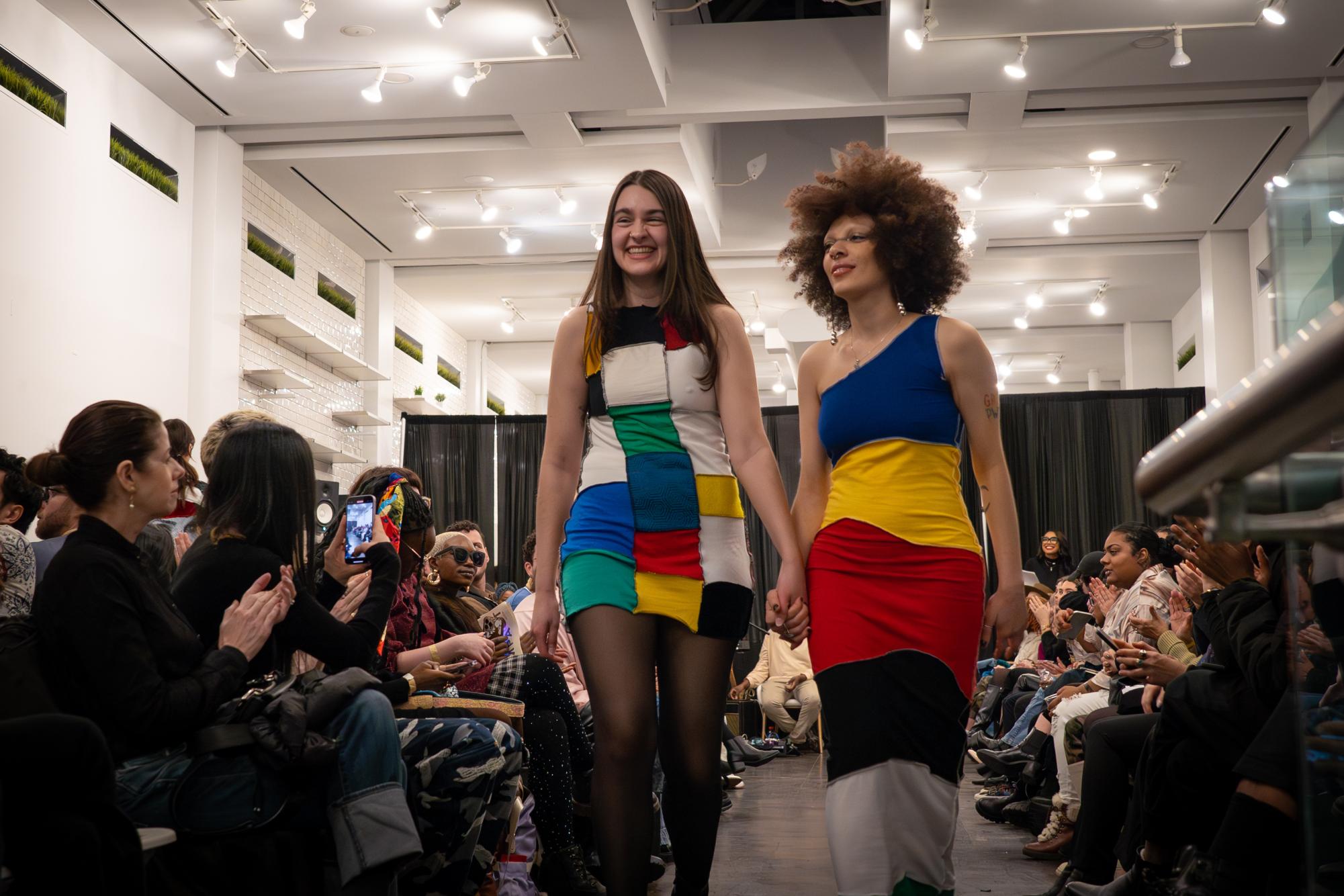IMPACT’s annual New York Fashion Week event showed creative spins on sustainable street wear and luxury couture. The nonprofit runway show showcased nine emerging designers stretching their impacts beyond the fashion industry and into environmental advocacy and sustainability. Despite the potential, organizational issues left the audience dwindling and impatient. From the programmed start to the finish of the runway show, the experience lasted over three hours with lengthy breaks in between each designer.
Lizzy Gee, IMPACT’s founder and executive producer, opened the show with a strong two-part collection, giving the audience a glimpse into a new take on sustainability — multifunctional garments. Gee’s collection, created through a combination of zero waste patterns and upcycled textiles, consisted of reversible pieces, critiquing overconsumption and showing how versatile fashion can be.
Gee’s use of bright fabrics, colorful patterns and traditionally feminine silhouettes — regardless of the model’s gender expression — spoke to her intent to deconstruct strict definitions of masculinity. While her mission to create pieces extending across the gender spectrum was clearly visible to the audience, her efforts to promote size inclusivity missed the mark. Gee’s introduction and website marketed her work to be “chic, sustainable designs for all genders and sizes,” so the lack of body diversity showcased on the runway was disappointing.
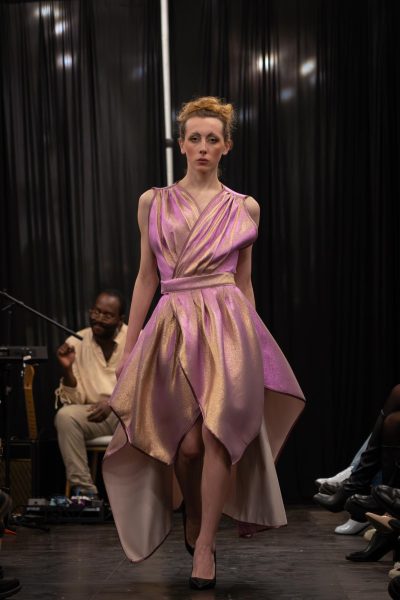
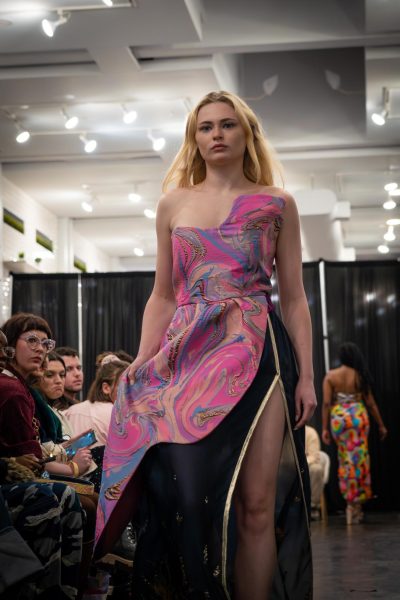
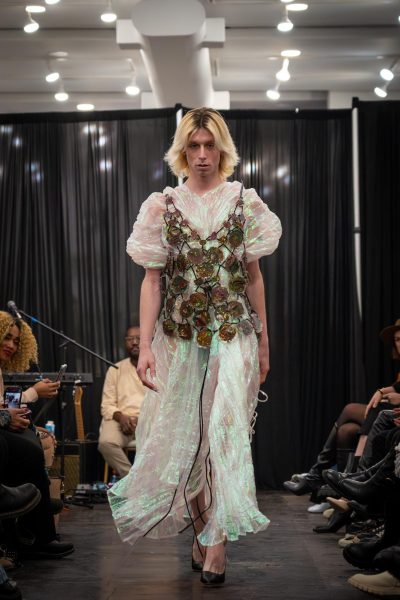
Outside of Gee’s reversible approach to target sustainability, each designer approached IMPACT’s mission in their own way. Paradox Vested Relics, which spent only four days on its fashion week line, utilized damaged goods and scrap metals — among other upcycled materials — to put an edgy flair on otherwise business casual and streetwear attire.
In sharp contrast to the colorful fabrics that preceded their runway appearance, the designers Kevin Carlisle and Daniel Sandino Concepcion featured unique cuts of suit jackets, a muted color palette and a somewhat provocative twist, due to its revealing elements, on what otherwise appeared to be work-appropriate and casual every-day garments.
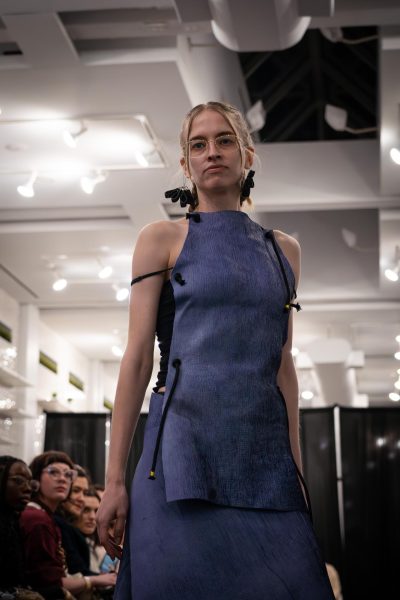
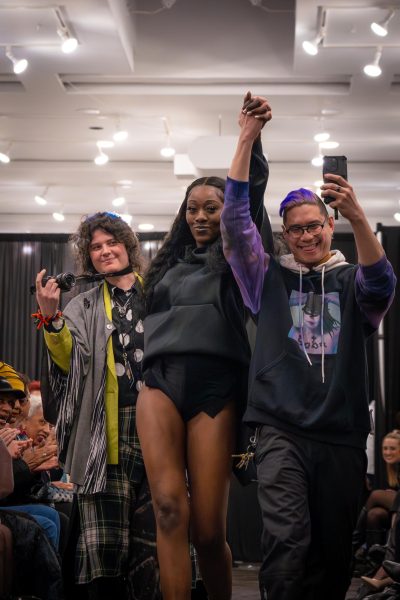
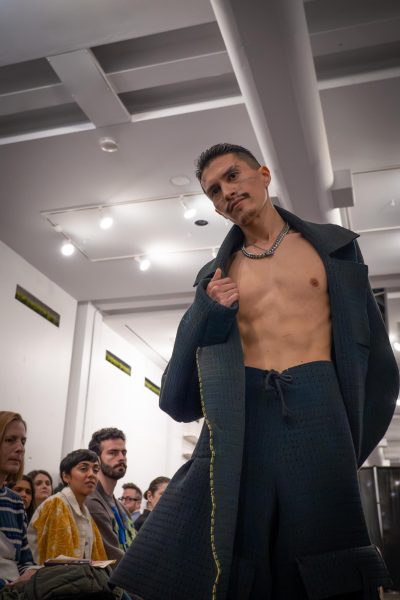
The next designer to hit the runway was SHIQI XU, a Parsons School of Design fashion alum from China. The English pronunciation of the brand name, (SHE-KEY), stands for “she is the he” and is at the core of Xu’s philosophy and design efforts.
When asked about the inspiration behind her collection, Xu noted “the unconscious behavior of looking at mirrors all the time.” She specified the theme of her designs with a one word statement: “narcissism.”
Her versatile collection contained not only typical women’s maxi dress and corset structures, but also played with the silhouette of traditionally feminine clothing. The unique shaping and integration of the color yellow drew the viewers’ eyes. Her stance on attention-grabbing clothing distinguished her work from every other designer, clearly highlighting which elements played into her critique on what she sees as the narcissist society of the fashion world.
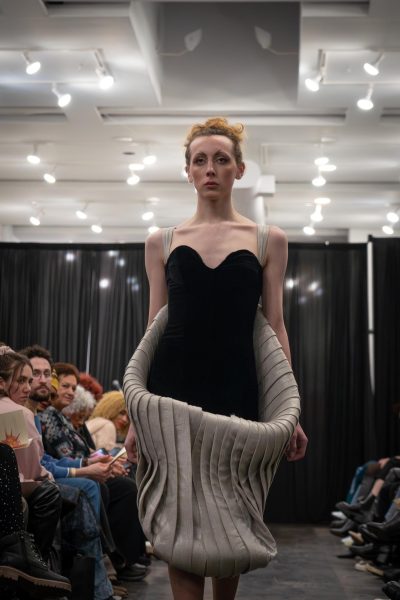
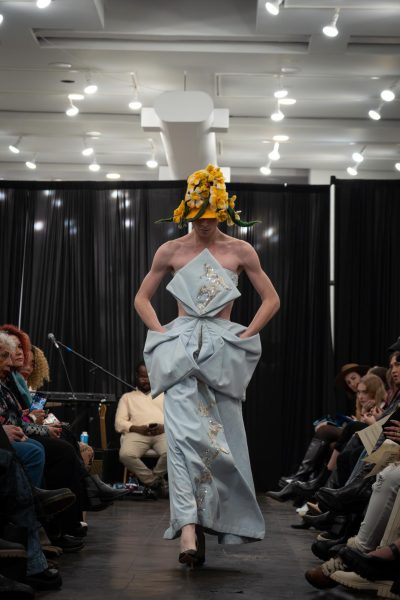
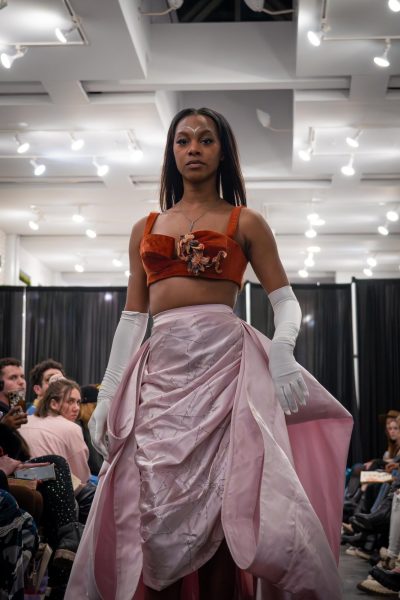
EARTHLY For The Planet followed with a retro-inspired line produced using donated second-hand materials. Created by designer Jordan Pietrafitta, the line breathed new life into donated denim with intricate and colorful painted designs. Pietrafitta also used bandana material and fabric scraps to create patchwork pieces.
Pietrafitta did not shy away from color, using color blocking techniques to bring the red, green and yellow fabrics to the forefront. Her brand alone has saved 881 individual items of clothing from landfills so far and aims to bring affordable, sustainable clothing to all demographics.
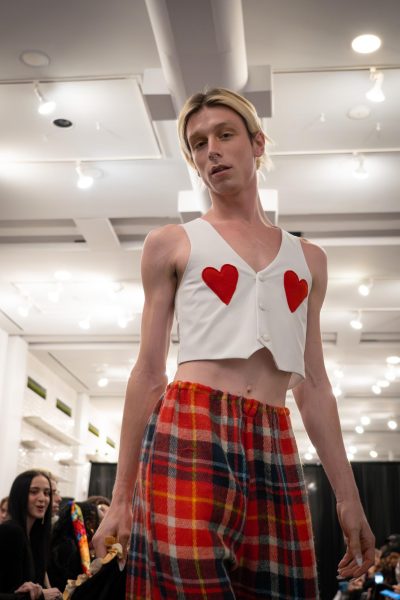
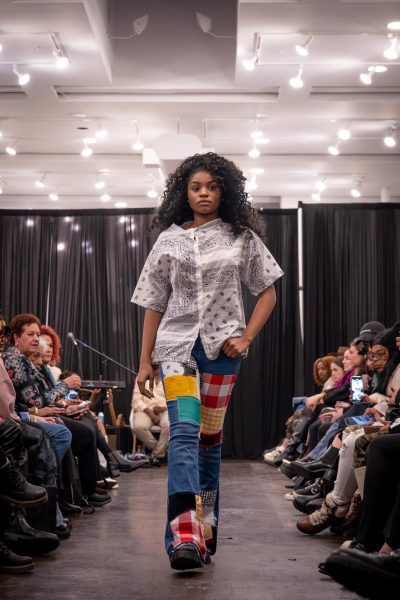
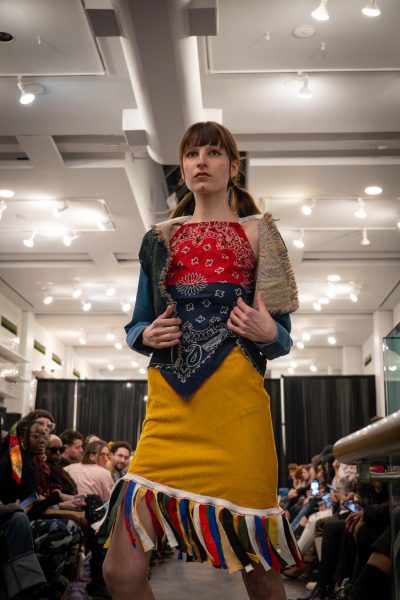
Samantha Jean Moore brought to the stage her brand MOCOCO — standing for Modern Country Couture. Moore explored the ideals of femininity and surviving in a patriarchal world by attaching ruffles and other traditional feminine details to more masculine clothing, including suit jackets and army print garments.
Moore’s mission as a circular fashion creator is not only to push the boundaries on gendered clothing, but to upcycle and reuse recycled materials to create something beautiful, in line with IMPACT’s mission.
“I am embracing unbridled femininity and gender-free clothing,” Moore said at the show. “You don’t have to be perfect all the time. You can express yourself as a little bit edgy and a little bit gritty.”
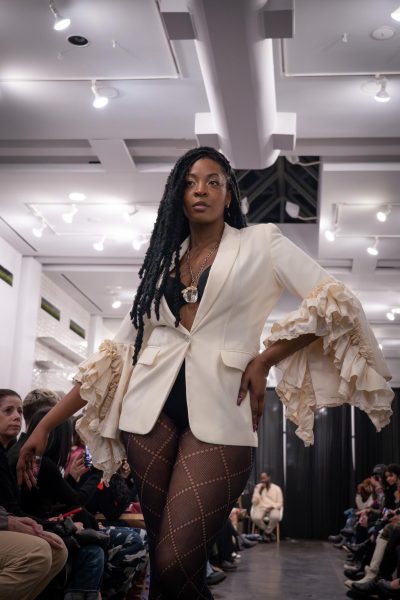
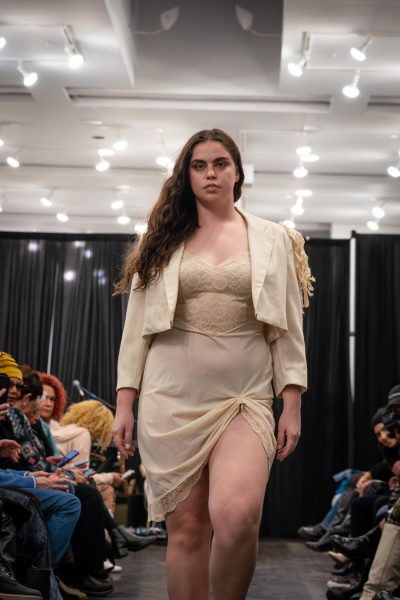
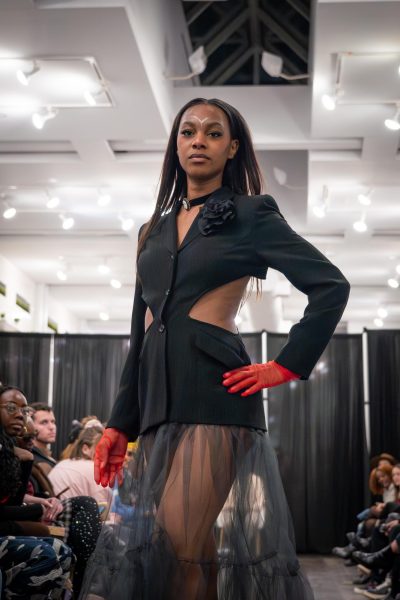
Making its NYFW debut, emerging fashion brand Oborot created a line with unique pieces, each one merged together from old articles of clothing to make new, unreplicable items.
Oborot seemingly critiques the overconsumption present in the fashion industry by showing what beautiful garments can be created out of clothing items we already own. Through a combination of a simple color palette and unique hemlines, the brand showcased beautiful art and wearable clothing all mixed into one.
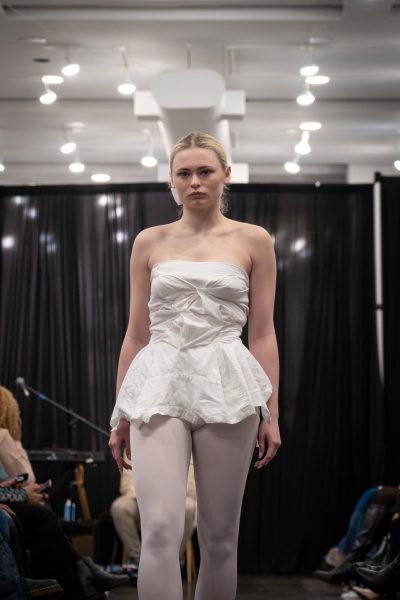
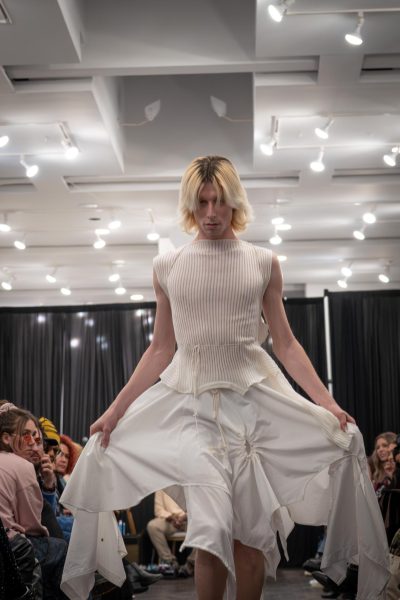
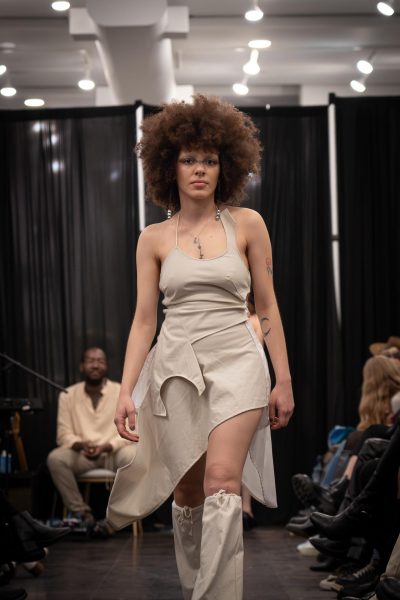
Harley de Oliveira brought humor to the NYFW stage with unique silhouettes. De Oliveira used items otherwise denoted as trash, and the theme of eggs is present throughout his work. He used deadstock materials and vintage clothing to create a circular style system, in which his garments are “fully recyclable after use,” according to his introduction.
De Oliveira’s models carried with them baguettes and croissants in plastic bags — as opposed to traditional handbags — to add a surprising element to the brand. Crowd murmurs expected the bread to be a nuanced social commentary, but de Oliveira quickly put those rumors to rest.
“I thought instead of a bag, they could have a little lunch,” de Oliveira said.
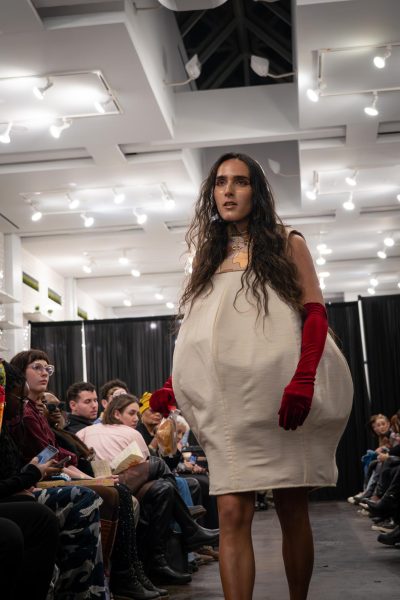
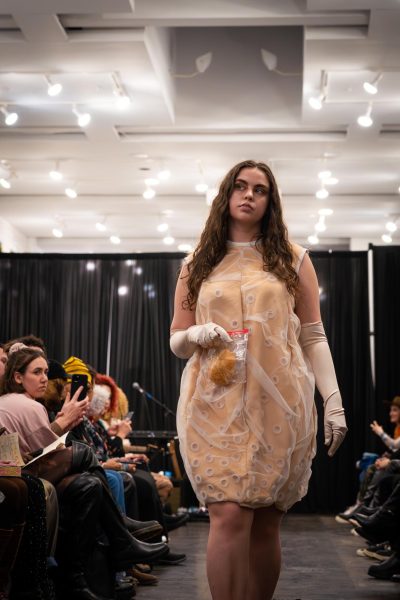
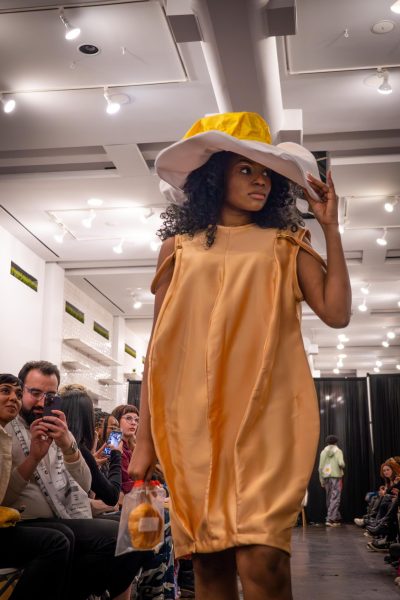
vireChic utilized unique recycled materials in its garments, including tin cans, soda tops and coffee filters, to create a “magic sustainability connection” between “creativity and compassionate respect for the earth and all its beings.” Showcasing beautiful meshwork and weaving, you would never guess the clothing had been made with scrap parts. vireChic emphasizes creating garments that do not abide by current trends, but rather creating pieces that can be worn forever and appreciated for their unique style.
The line entitled “The Voice of Our Ancestors,” brought not only a sustainable collection, but also paid homage to the designer’s Brazilian heritage. The brand also highlighted women’s intuition, innate wisdom and cultural reflection with the carefully selected music — Ekaterina Shelehova’s “Savage Daughter” — to enhance the solemn mood and clear cultural representations already articulated in the clothing garments.
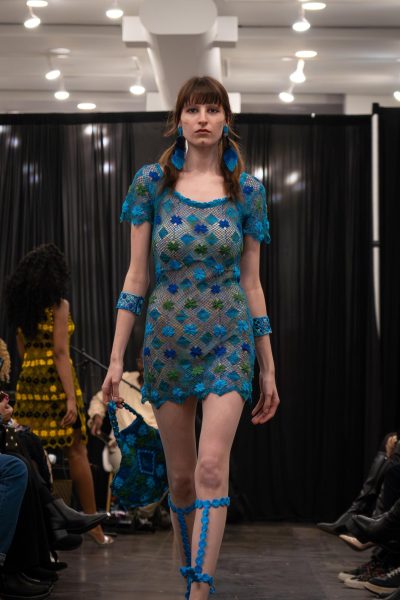
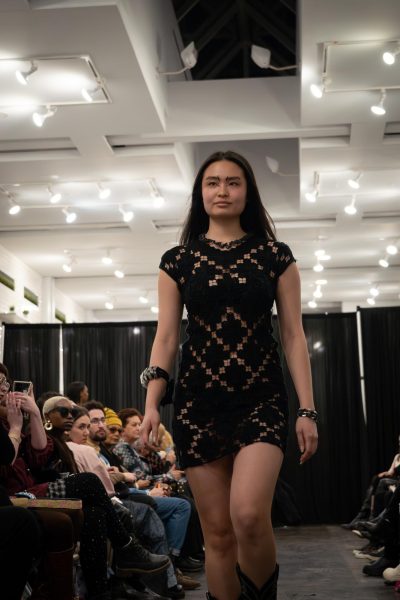
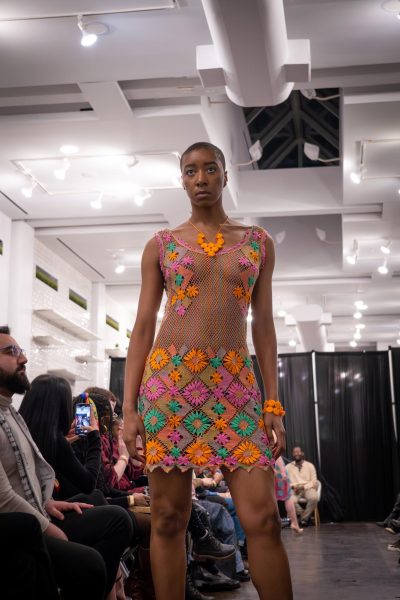
Finally, the winner of the IMPACT NYFW Scholarship, Junkyrd by Roger Seifert, closed out the show with a back-to-school-inspired line titled “Class Clowns.” Seifert noted that he had always struggled with self confidence, so receiving the award to fund and create his first NYFW show was the boost he needed. Created with old basketballs, pencil cases and athletic knee pads, among other high school memorabilia, the line brought Seifert back to his younger days.
“The suit I made, I was actually going to make for my prom in high school and I gave up because it was too hard,” Seifert said. “So now I did it. It’s a full circle moment for me.”
Hosted by America’s Next Top Model star Bianca Golden and with entertainment from Brooklyn-based band The Narcotix and IMPACT performer Ameya Santos, the show had all the elements for a smooth and fun-filled evening.
When the show closer, Seifert, finally came out with his line, the audience left was miniscule compared to what it was at the opening. It was disappointing to see the winner of the scholarship see such little turn out, which might have been avoided with more thoughtful planning.
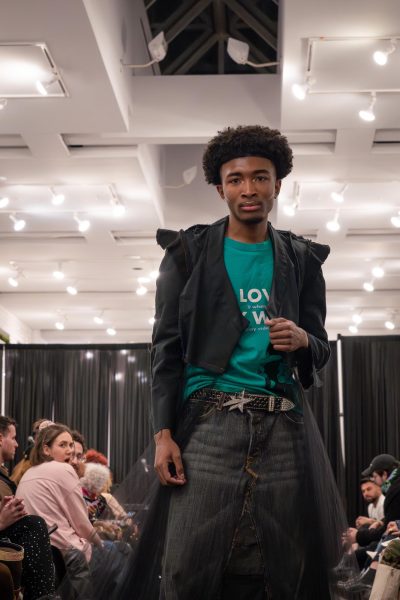
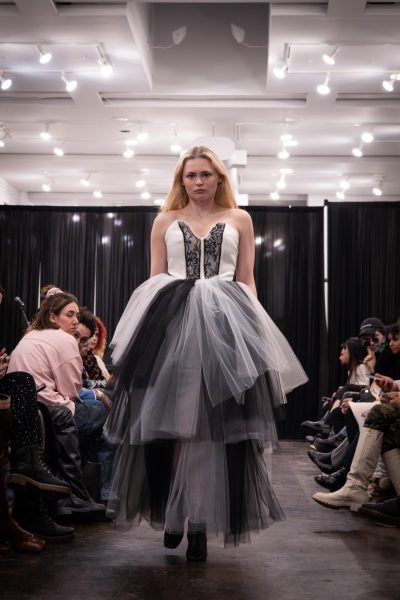
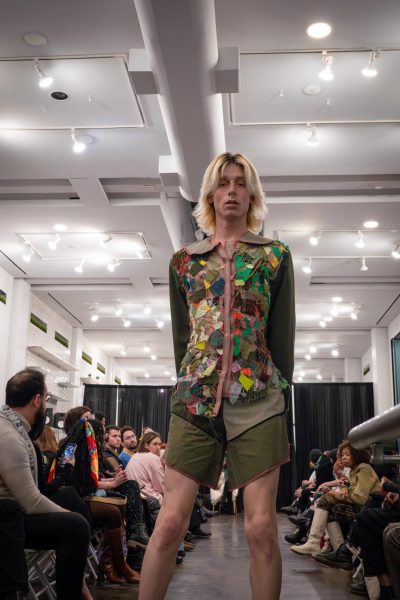
Aside from that, the beautiful work from the nine unique designers were all united for the cause of sustainable fashion and environmental advocacy, with delightful music accompaniment.
Contact Maisie Zipfel at [email protected].



